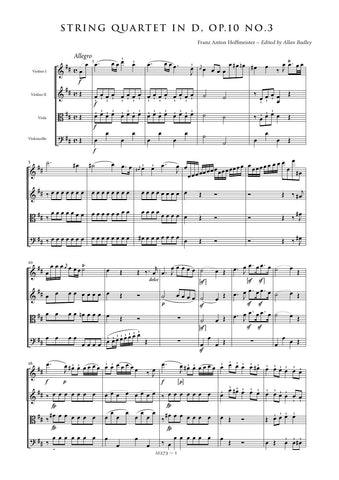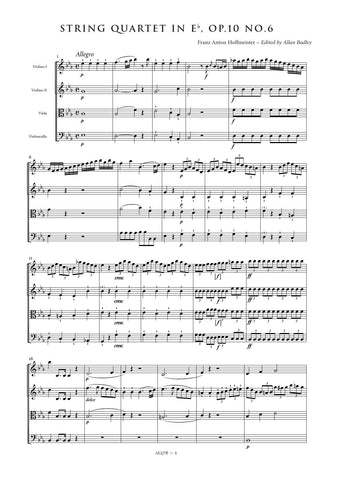Hoffmeister, Franz Anton: Viola Concerto in D major (AE374) – sheet music
Previous Product
Description |
Hoffmeister, Franz Anton (1754-1812)
|
||||||||||||||||||||
Audio sample |
|||||||||||||||||||||
Details |
Little or nothing is known of the origins of the Viola Concerto in D. Johann Traeg offered the work for sale in his catalogue of 1799 but in all likelihood it was composed either during the late 1780s or early 1790s. Like many unpublished concertos of the period the present work survives in a single source, in this instance a set of parts preserved in the Schsiche Landesbibliothek, Dresden under the call number Mus.ms. 3944-0-5. The wrapper reads: Concerto in D / a / Viola Principale / Due Violini. / Due Oboi / Due Corni in D. / Viola / et / Basso. / del / Signor Hoffmeister. This set of parts formerly belonged to Joseph Schubert, a composer and violist in the Dresden Court Orchestra, whose autograph cadenza to the first movement is written into the solo part [See F.A. Hoffmeister, Violakonzert D-Dur, ed. Norbert Gertsch / Julia Ronge, München, G. Henle Verlag, 2003].The Dresden source is unusually problematic not just in terms of its numerous textual inaccuracies but also in its inclusion of an incomplete set of parts for an alternative second movement styled 'Siciliano.' These parts are in the hand of the copyist who produced additional ripieno parts for violins I & II and basso. The ripieno parts appear to be a later addition to the set and cast further doubt on the authenticity of the fragmentary 'Siciliano' movement. The solo viola part is particularly problematic as it has been heavily marked by at least three players, one of whom attempted to erase a number of 'original' articulations. The solo viola part is particularly problematic as it has been heavily marked by at least three players, one of whom attempted to erase a number of 'original' articulations. The style and notation of articulation and dynamic markings have been standardised throughout, and, where missing, markings has been reconstructed from parallel passages. These are indicated by the use of dotted slurs or brackets where appropriate. The copyists' distinction between staccato dots and strokes have been retained throughout although on a number of occasions conflicting markings have been standardised. Obvious wrong notes have been corrected without comment; editorial emendations with no authority from the source are placed within brackets. Dianne James Allan Badley |














